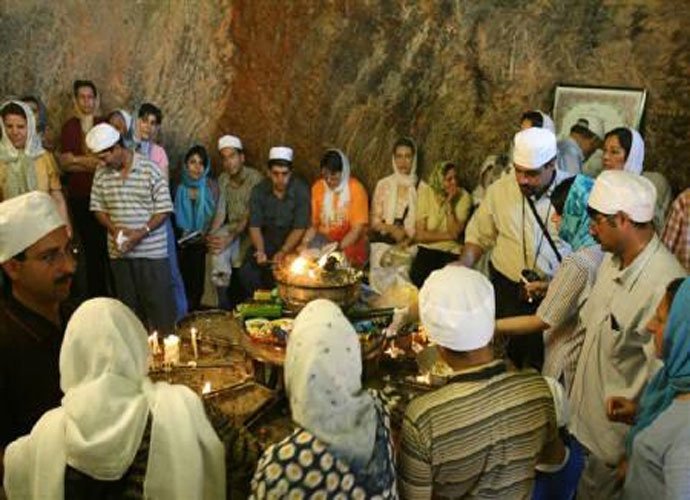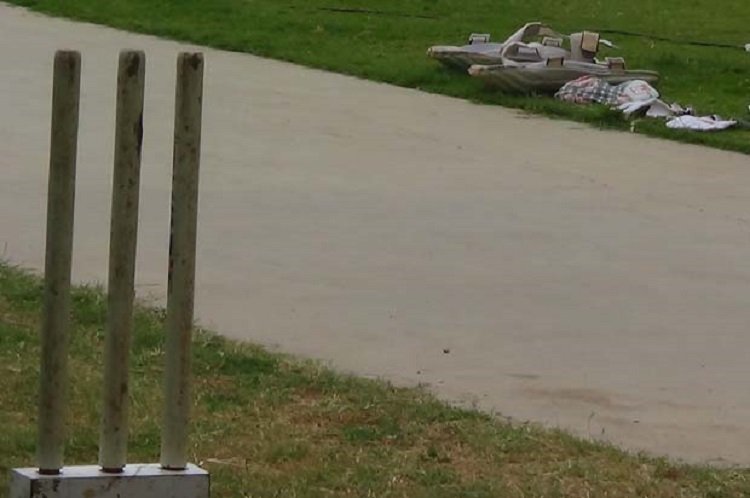A Parsi visits the land of his fathers and finds a different Islamic Republic
Iran is home to around 30,000 of the nearly 145,000 Zoroastrians in the world today.
The first thing that struck me in Iran was the ubiquitious Farohar, the logo in so many establishments, both Zoroastrian as well as non-Zoroastrian. The Farohar is a mythical symbol, possibly adapted from Egyptian or Mesopotamian writings by the Achaemenid kings (ruled in BCE), I was told that this symbol was barely used by subsequent dynasties till its resurgence in recent times.
In India too it has become quite the Parsi (A Parsi is a Zoroastrian of Indian origin) fashion statement, every Parsi owns at least one piece of jewellery or clothing with a Farohar. In Iran, hotels, banks, erstwhile Royal seals, many current government departments and, of course all Zoroastrian places of worship display the Farohar. But I am running ahead of myself.

Coincidentally, our group was in Iran during Prime Minister Narendra Modi’s state visit to Teheran between May 22 and 23, a highly symbolic one considering the contribution to the progress of India by Parsis.
I went to Iran for the first time in 1990, I was an observer with the UN and the aftermath of the revolution and the effects of the recent Iran-Iraq war was evident everywhere. At that time there was a distinct military air about the whole country, small border towns were veritable forts and military hardware was visible everywhere.
I am a Parsi Zorastrian and the Iranian establishment viewed me with suspicion, they wondered if the Indian government sent me to subvert local Zoroastrians. A few Zoroastrians, mainly Parsis, would meet me, often furtively and most did not want to have anything to do with me, as the risk of being interrogated was too high.
Twenty-six years later the environment has changed completely. Zoroastrians are respected, their places of worship flourish and the earlier general air of furtiveness has been replaced by a quiet, unobtrusive dignity. I was told this time, that there are many more Zoroastrians now than twenty or so years earlier. Possibly more of them are declaring their faith? Or is it that some Iranians are reverting to their origins, or maybe a bit of both?
Persia, derived I think from the old word Parsia, was a Zoroastrian kingdom till the advent of Islam. The evidence of the Zoroastrian influence is visible in many of the old monuments. Persepolis being the most important, the Achaemenid Empire at its zenith ruled large swathes of the known world from here. Other monuments bear witness to the great Zoroastrian kingdoms of yore, Tag-e-Bostan, Bisotun Caves, Naqsh-e-Rajab, Naqsh-e-Rustam and tomb of Cyrus the Great.
Though I had been to Iran earlier, I did not get a chance to visit Zoroastrian sites as most of them are in the hinterland and as a military officer on deputation to the UN, my travel within the country was severely restricted to areas where I was operating. This pilgrimage gave me great opportunity to see some great Zoroastrian (and Persian) history.
The Agiary in Tehran and Atash Behram in Yazd, (an Agiary and Atash Behram are levels of Zorastrian places of worship) are remarkably well maintained, funds from the Irani Zoroastrian diaspora seem well spent on clean and well-appointed places of worship. The Yazd Atash Behram is the only Atash Behram outside of the eight in India. It was a joy to pray at these places.
Other Zoroastrian shrines have interesting stories associated with them, but in each case the meticulous maintenance and facility for visitors is apparent. There are said to be six major Zoroastrian shrines and we had the privilege of visiting four. These shrines are mainly in the desert on rocky hillsides in very stark terrain, witness to the harsh events of history and sometimes the persecution of Zoroastrians.
Apart from the shrines, there are holy fires in tiny rooms, said to have been burning non-stop for hundreds of years. The small and secretive rooms in which they are housed bear witness to the need to hide one’s Zoroastrian faith at particularly vulnerable times in history. The fires have a mystique of their own and impart a deep feeling of awe and contentment to the faithful. I think that each village had its own fire of which a few remain, secret icons of faith and succour through the years.
Zoroastrians are a tiny community, but a miniscule speck of the mighty Zoroastrian Empires that once held sway over large parts of the world. Yet their contribution here and abroad has been out of all proportion to the size of the community. As an agnostic Zoroastrian for the large part of my life, visiting the land of my forefathers and seeing their might cloaked in benevolence and wisdom, has been a very enlightening experience.





